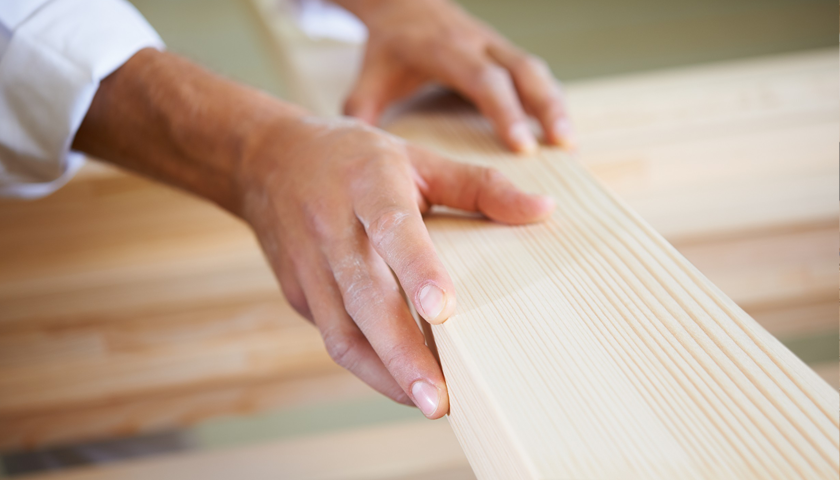Like the first daffodil in Spring, our fond memories of the recent long and mild British Autumn are now, like bubbles in a cold bath, rapidly disappearing. The chill winds of Winter are now upon us, making on-site decoration of newly installed timber joinery and cladding items, at best, an uncertain process.
It’s a situation that global coatings manufacturer AkzoNobel Wood Coatings, with its UK headquarters in Blackburn, are very familiar with, and is one key factor that determines their stance of strongly endorsing the fully factory finished concept in conjunction with their extensive range of timber joinery and cladding coatings. Fully factory finished timber joinery and cladding ensures that the primer, base stains, mid and topcoats are applied under climate controlled factory conditions, no matter how challenging the weather is outside.
The 70’s and 80’s produced some feel-good news stories such as flares, punk rock and some very wild haircuts but also heralded some bad-news stories when considering build, installation and decoration practices vis a vie on-site timber joinery. Regrettably, it became the norm to see base stained or primed only timber joinery delivered to sites and stored very badly, often unwrapped and in fully exposed ground contact situations. These were then installed and built around leaving them unprotected in adverse weather conditions for long periods. Only when the exterior build was mostly complete would the on-site decorator have a chance to begin, often having to cope with the added problems of already saturated timber, mortar, render or general building debris and damages and an impending dropped scaffold deadline. It was inevitable that it became a practical necessity to cut corners. It’s a situation that’s happily improved…a little like wearing those flares, but sadly not to the point where it’s under control by any means…a little like the haircuts!
By only using on-site coatings to bare or primed only timber joinery the project manager is opening-up a myriad of possible wounds that can haemorrhage a host of unnecessary problems. AkzoNobel know that fully factory finished timber joinery products have a better performance expectation and a greater resistance to the challenges of a modern building site based on a modular ready to fit concept than similarly produced bare or primed only timber joinery items.
This level of certainty is gained not only from the ‘uncertainty’ of on- site decoration but also from the advantages of using dedicated coatings, applied under factory controlled conditions to joinery items prior to assembly, glazing and fitting.
Consider a glazed and assembled timber window or door and the amount of areas where on site coating is simply not possible once installed. There are many vulnerable points subject to potential moisture ingress that are reliant, at best, on a primer coat for protection.
At AkzoNobel, the factory coating finishes are designed with the user in mind and they liaise with timber joinery manufacturers to produce a full coating specification to suit production processes and equipment. A typical specification begins with the application of base stains or primers containing impregnation through a ‘Dip or Deluge’ process allowing sufficient product to be absorbed into the timber, especially through end grains with all surfaces easily accessed prior to assembly. After drying, the coating process continues with specialised sealers designed to offer added protection to vulnerable areas such as joints and end grains and is usually completed with the application of one or two topcoats, sprayed at considerably higher film builds that wouldn’t be possible with using brush or roller application.
Full drying is carried out at each relevant point of the operation, often using climate control systems which can control the movement, temperature and humidity of warm, dry air, even recycling cold wet air where necessary. This ensures effective curing at each stage is achieved within a typical 4-6-hour period. After the coating stage is complete that the final assembly and glazing of the timber joinery item begins, with handles, locks, hinges and glass units being fixed to a fully coated and sealed all around surface.
- Sikkens Cetol WP562– a translucent base stain with resistance to the effect of blue stain fungi. Applied by dip, deluge spray or more industrial coating methods.
- Sikkens Cetol WF960– A translucent spray applied mid and topcoat based on a newly formulated resin to combat the effects of ‘blushing’- a milky bloom appearance effecting freshly coated translucent systems installed in cold damp conditions.
- Sikkens Rubbol WP151– a 2K water borne PU primer with excellent adhesion and premium stain blocking properties
- Sikkens Rubbol WP198 – a traditional 1K water borne primer with good flow and stain block properties.
- Sikkens Rubbol WF382– a water borne acrylic topcoat for use over 1K or 2K primer systems offering an attractive and increasingly popular semi matt appearance available in a ready mixed RAL9016 shade or the whole spectrum of tinted colours.
Once installed AkzoNobel offer a full range of maintenance and repair products including their Sikkens maintenance milk packs. These include small can repair coatings matched to replicate the appearance of the factory applied products and a 2-bottle pack, containing sponge, cleaner and maintenance balms. Keeping coated joinery clean and refreshed together with protecting and maintaining it in pristine condition.
Carl Circus, UK Distribution Manger, AkzoNobel Wood Coatings commented, “the use of on-site modular builds is becoming increasingly popular, meaning that fully coated, assembled and functioning joinery sets can be fitted into near complete building shells”.
For more information on Akzo Nobel’s factory coating finishes please visit their website.




